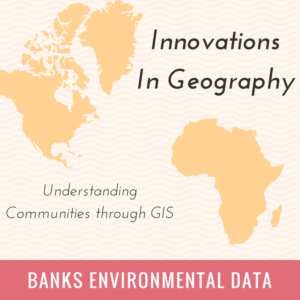 During the 2016 Texas GIS Forum hosted by TNRIS, Dr. Nazgol Bagheri made history as the first female keynote. Dr. Bagheri is a trained architect and urban planner currently serving as an Assistant Professor in Department of Political Science and Geography at the University of Texas at San Antonio. In addition to being the first woman keynote, Dr. Bagheri is an innovative critical feminist geography scholar who is revolutionizing the field of GIS. In contrast to many of the sterile, data driven practices used in modern GIS, Dr. Bagheri’s work highlights how GIS can offer an alternative visualization of space. She combines geography and gender theories together in order to visualize gender relations and their effect on everyday geographic patterns.
During the 2016 Texas GIS Forum hosted by TNRIS, Dr. Nazgol Bagheri made history as the first female keynote. Dr. Bagheri is a trained architect and urban planner currently serving as an Assistant Professor in Department of Political Science and Geography at the University of Texas at San Antonio. In addition to being the first woman keynote, Dr. Bagheri is an innovative critical feminist geography scholar who is revolutionizing the field of GIS. In contrast to many of the sterile, data driven practices used in modern GIS, Dr. Bagheri’s work highlights how GIS can offer an alternative visualization of space. She combines geography and gender theories together in order to visualize gender relations and their effect on everyday geographic patterns.
Dr. Bagheri’s innovative mapping methods are part of a broader attempt to geographically represent a variety of marginalized identities by combining quantitative GIS practices with nuanced cultural understandings. These alternative mapping strategies aim to look past dominant cultural norms and instead highlight individual experiences. For example, many researchers use a method called participatory mapping when collecting data. Participatory mapping is the process in which research subjects are provided GIS tools to map their own experiences and communities. This allows the individuals being researched to actively share local, personalized knowledge of their community. In additional to providing researchers with valuable information, the subjects also benefit from the GIS training so that the research is collaborative and mutually favorable.
An interesting example that speaks to the wide range of possibilities for GIS is the use of participatory mapping to understand the livestock trade and marketing practices of local farmers and traders in rural Uganda and Kenya. Started by the International Institute of Rural Reconstruction and Technical Centre for Agricultural and Rural Cooperation, this mapping project asked individuals in the Achorichori Parish to map their own migratory practices and routines in order to create a comprehensive understanding of grazing lands and wet areas. By plotting important points of interest, the resulting maps were able to reflect the subject’s everyday livelihood and offer an alternative, more personalized understanding of rural landscapes in Eastern Africa. To learn more about this project check out: http://participatorygis.blogspot.com/2016/12/life-on-move-pastoral-life-and.html.
Dominica Whitesell
Environmental Research Analyst
Banks Environmental Data
Dominica is a first-year masters student studying geography at the University of Texas at Austin. She is particularly interested in working with feminist GIS practices to map out the global flows of the secondhand clothing industry.
